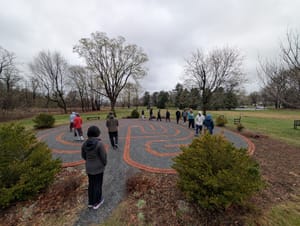The similarities between YouTube and Napster are uncanny. Copyright-infringing content, sudden popularity, a seeming direct connection to the pulse of popular youth culture, scandals, a San Mateo address. (I’m not the first one to notice this.) But the similarities run deeper.
YouTube is architecturally similar to the early Napster service, in that it’s a peer-to-peer service in function only. Yes, it’s user-driven, and yes, the power of YouTube is that it lets people share videos, make unexpected connections, and find cool stuff.
Underneath the hood, though, YouTube is a big, centralized server farm, just like Napster.
This was Napster’s downfall, because it gave the record companies a target to go after. Truly peer-to-peer services that came later, such as KaZaA, have proved much more resilient because it’s harder to stamp out illicit copies when they’re distributed all over the world. With Napster, though, you only had to bring your court order to a single address: Napster’s.
In the end, this made Napster’s legal troubles unavoidable. There was no where for them to run when the hammer of the law came down, and they had no choice but to knuckle under.
And that was a shame, not only for Napster’s users but for the record companies, who lost their last big chance to connect with their biggest fans in a single place.
Media companies should pay attention to the Napster story when they consider YouTube. Sure, the company is an easy target for legal action. YouTube knows this, and by all accounts, responds quickly to claims of copyright infringement by removing the offending videos. But as quickly as they remove videos, people post more. Let’s get real: A vast amount of YouTube’s content almost certainly violates someone’s copyright, and is only on the site because no one has complained about it yet. That’s not exactly a sustainable situation, and unless it’s checked, this problem will catch up with YouTube within the year.
That gives the TV and movie companies just about twelve months to figure out how to get YouTube on their side. Instead of going after bootleg videos, outfits like Saturday Night Live should be posting their own skits–with embedded advertisements, as Calacanis suggested awhile back. They should be reaching out with special offers to YouTube users who have favorited their videos. They should be watching YouTube’s traffic (and its rising stars, real as well as fake) to figure out where their next hits are coming from.
In the meantime, YouTube needs to keep going after copyrighted material. They need to play up the substantial non-infringing uses of the service. And they need to develop more ways for content producers to engage their customers within YouTube, in order to make the site a channel not only for video, but for marketing.
Because if the hammer comes down, all that opportunity is going to evaporate. Good luck trying to do marketing over BitTorrent. Two years from now, YouTube may look like it was television’s best friend.


